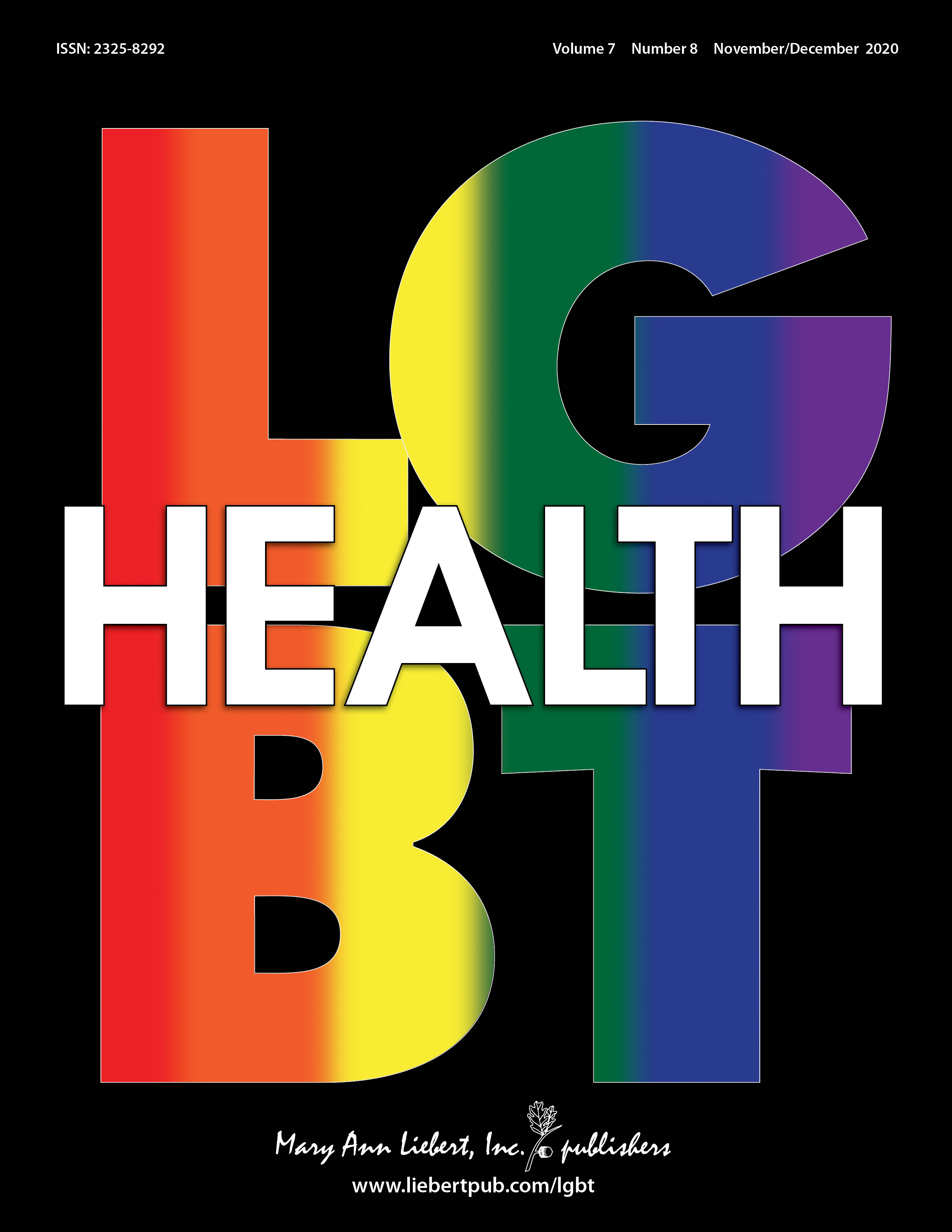LGBT Health
Substance Use Prevalence, Risks, and Disparities
Advancing the Science on Substance Use Disparities Among Sexual and Gender Minority Populations: Introduction to a Virtual Issue of LGBT Health
Substance use is one of the most pressing health issues facing the sexual and gender minority (SGM) community. Research consistently documents stark disparities between SGM people and their cisgender heterosexual counterparts in rates of alcohol, marijuana, and illicit substance use1-3; these disparities are concerning given the impact of substance use on myriad health outcomes across the lifespan.4 Despite a fairly large literature documenting these disparities, there is a smaller literature on treatments targeted to the SGM community and even fewer studies targeted to the subgroups within the SGM community most at risk. The nine articles included in this Virtual Issue on Substance Use Prevalence, Risks, and Disparities help to advance the science on substance use among SGM people by addressing many of the shortcomings of the extant literature.
First, SGM people are too often analyzed as a single group when examining substance use disparities, which obscures important subgroup differences within the SGM community. Even in studies in which SGM subgroups are analyzed separately, most continue to focus on cisgender gay, lesbian, bisexual, and heterosexual people, ignoring understudied sexual orientations (e.g., pansexual, queer, asexual), as well as transgender, nonbinary, genderqueer, and other gender diverse people. In the current virtual issue, Boyd et al.5 focused on adults who were “not sure” of their sexual identity (an important understudied group of people), observing that “not sure” adults had higher odds of severe alcohol use, tobacco use, and drug use disorders than heterosexual adults. In addition, using a large sample of SGM adolescents, Watson et al.6 observed high rates of alcohol, marijuana, and cigarette use among transgender adolescents (regardless of sex assigned at birth) compared with both nonbinary/genderqueer and cisgender sexual minority adolescents.
Second, when documenting disparities, studies of substance use among SGM populations have rarely analyzed how multiple demographic factors intersect, which limits our understanding of substance use among specific groups. In this virtual issue, Schuler et al.7 used data from the National Survey on Drug Use and Health (NSDUH) to examine substance use at the intersection of sexual orientation, race/ethnicity, and gender. Analyses revealed that disparities between sexual minority and heterosexual groups were widest for Black and Hispanic/Latinx sexual minority women. Capistrant and Nakash8 also used the NSDUH to examine disparities in illicit opioid use at the intersection of sexual orientation, age, and gender. They observed that cohort differences in opioid use varied according to gender. In a similar set of analyses with the NSDUH, Schuler et al.9 observed that some disparities between sexual minority and heterosexual adults in cigarette, marijuana, and illicit drug use were most pronounced at younger ages (e.g., among lesbian women), whereas others were more pronounced among older groups (e.g., among bisexual women and men).
Third, we know little about how substance use disparities among SGM people change over time. To address this, Felt et al.10 analyzed data from multiple waves of the Youth Risk Behavior Survey and observed that, despite an overall decline in substance use across waves among youth as a whole, disparities between heterosexual and sexual minority students persisted. Declines in substance use over time were least pronounced among gay and lesbian students relative to bisexual, “not sure,” and heterosexual students.
Fourth, studies of substance use disparities most often use measures of prevalence, which provide little information about frequency, intensity, or consequences of use. In their article focusing on adults “not sure” of their sexual identity, Boyd et al. used measures of substance use disorder, which take into account frequency, consequences, and dependence.5 Further, Fish11 used data from the National Epidemiologic Survey on Alcohol and Related Conditions III to examine disparities between sexual minority men and women and their heterosexual counterparts in both standard binge drinking and two levels of high-intensity binge drinking. Sexual minority women were more likely than heterosexual women to report all levels of binge drinking, but there were fewer differences between sexual minority and heterosexual men.
Finally, our understanding of the mechanisms driving substance use disparities among SGM people, as well as the various conditions that co-occur with substance use, remain limited. In this virtual issue, Morgan et al.12 analyzed data from the NSDUH and found that disparities in prescription opioid misuse were present for all sexual minority groups (i.e., gay men, lesbian women, and bisexual men and women). The association between sexual orientation and misuse was attenuated downward after adjusting for depression and suicidal ideation, suggesting that these mental health concerns are among the drivers of substance use disparities. Further, in a short report in this virtual issue, Gonzales13 observed that past 30-day marijuana use was higher among lesbian women, gay men, and bisexual adults relative to heterosexual individuals and that marijuana use frequently co-occurred with psychological distress, cigarette use, and binge drinking.
In sum, the nine studies in this virtual issue identify gaps in the current literature on disparities between SGM and cisgender heterosexual people in substance use and point to areas in need of novel research. In particular, more research is needed to examine change over time in substance use within-persons, as well as the mechanisms driving these changes. Perhaps most importantly, few substance use prevention, reduction, and treatment interventions are currently available that have been tailored to the unique contexts and experiences of the SGM community, let alone the subgroups most at risk within the broader community. Such intervention work is imperative if we are to make substantive headway in reducing the disparities reported within this virtual issue.
Michael E. Newcomb, PhD
Department of Medical Social Sciences and
Institute for Sexual and Gender Minority Health and Wellbeing,
Feinberg School of Medicine, Northwestern University, Chicago, Illinois
Download Free Articles
More
about this journal

Be notified
as new articles are published
